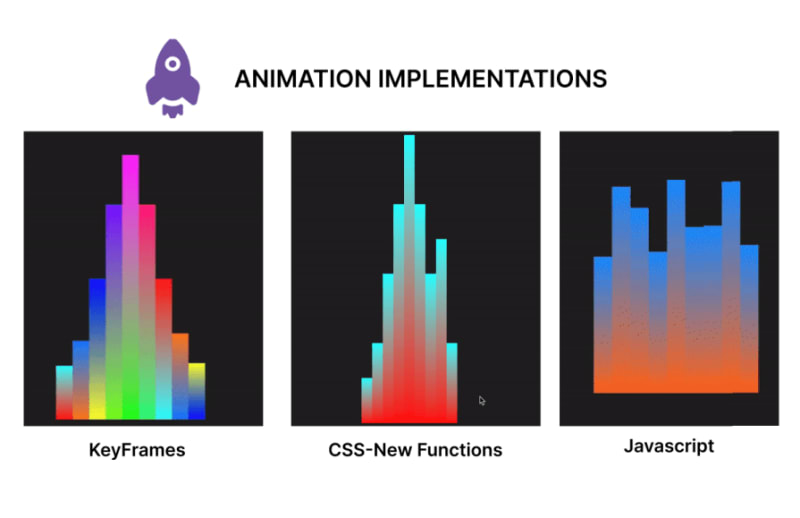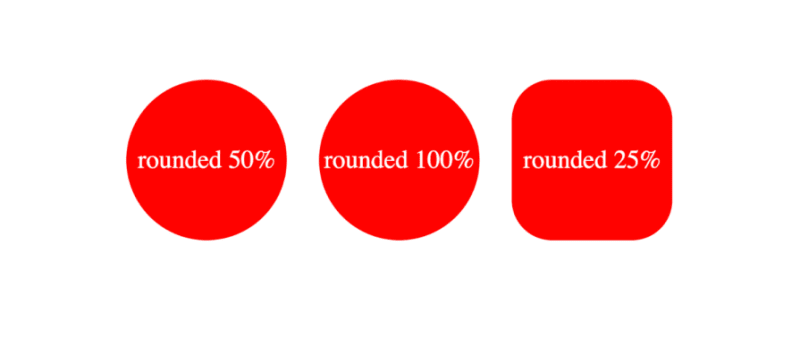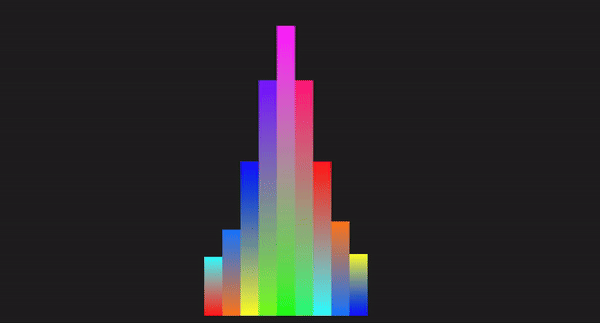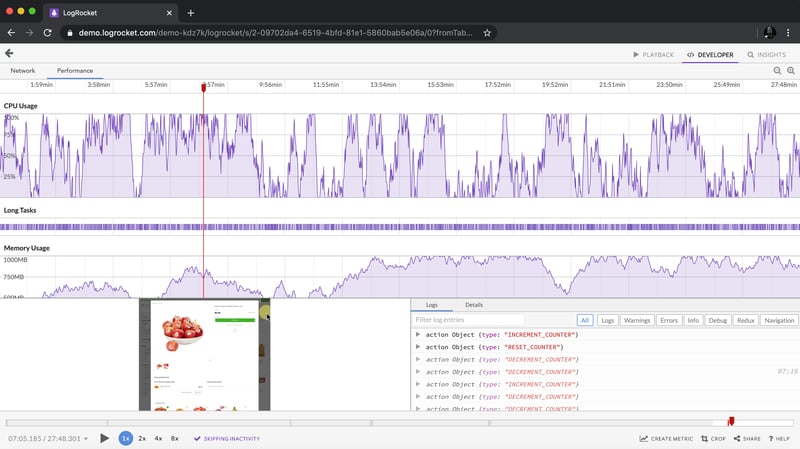ホームページ >ウェブフロントエンド >CSSチュートリアル >新しい CSS 関数による CSS 時間ベースのアニメーションの最適化
新しい CSS 関数による CSS 時間ベースのアニメーションの最適化
- 王林オリジナル
- 2024-08-21 06:49:12513ブラウズ
エマニュエル・オディオコ著✏️
長い間、数学関数のサポートが制限されていたため、時間ベースの CSS アニメーションの作成ははるかに困難でした。従来のアニメーションはキーフレームと長さに依存しており、複雑な計算に基づく時間ベースの更新の柔軟性が欠けていました。 mod()、round()、三角関数などの CSS 関数の導入により、開発者は CSS で時間ベースのアニメーションをマスターする方法を検討できるようになりました。
始める前に知っておくべきこと
新しい CSS 関数を使用した CSS での時間ベースのアニメーションに関するこの記事を最大限に活用するには、CSS アニメーションとトランジションについてよく理解しておく必要があります。 @keyframes を使用してアニメーションを作成し、そのタイミングを制御する方法を理解できるはずです。また、DOM 要素を操作してユーザー イベントに応答する機能に重点を置いて、JavaScript の基本を理解している必要があります。
最後に、calc() などの新しい CSS 関数を理解し、mod()、sin() と cos() を含む三角関数、round() などの新機能を探索する準備ができていれば、良い基礎となります。
この記事を読み終える頃には、アニメーションが伝統的に JavaScript を使用して HTML キャンバスにどのように実装されていたか、そしてそれらが新しい CSS 関数とどのように比較されるかが理解できるでしょう。従来の CSS キーフレームよりも mod()、round()、三角関数を簡単に使用できることを理解します。

CSS 時間ベースのアニメーションとは何ですか?
時間ベースのアニメーションは新しいものではなく、10 年以上前から存在しています。使い方が複雑なものもあれば、そうでないものもあります。数学的計算が主な CSS ファイルをご存知ですか?時間ベースのアニメーションもその一部です。
名前が示すように、これらのアニメーションは時間と密接に関係しており、位置、サイズ、色、不透明度などの要素のプロパティが時間の経過とともに変化します。 CSS 時間ベースのアニメーションはスムーズな遷移を生成し、Web アプリケーションの感触を向上させ、より良いユーザー エクスペリエンスを提供します。
時間ベースの CSS アニメーションは主に、定義された開始タイムラインと終了タイムライン、および補間ポイントで構成されます。ここでの補間とは、アニメーションの進行に応じて、指定された期間にわたるアニメーションの開始と終了の間の中間値を計算することを指します。補間の理由は、初期状態から最終状態へのスムーズな移行を提供するためです。
時間ベースのアニメーションは、CSS 変数といくつかの数学関数の両方を組み合わせて発生します。この統一性により、開発者は時間の経過とともに変化するアニメーションを作成できるようになり、キーフレーム アニメーションでは夢見ることしかできなかった、より柔軟なアニメーションが実現します。主要な概念とその仕組みを詳しく見てみましょう。
時間ベースのアニメーションを分解する
このセクションでは、時間ベースのアニメーションを作成するための一般的な構造を主要なコンポーネントに分けて説明します。
初期状態
初期状態は、アニメーションが開始される前の要素の開始プロパティを定義します。これは、指定された位置、サイズ、色、不透明度などです。以下の例:
.box {
opacity: 0;
transform: translateY(-20px);
}
上記のコードでは、不透明度と変換プロパティを定義するクラス ボックスを持つ要素の初期状態が得られます。
アニメーション トリガーは、アニメーションを開始するイベントを指定します。一般的なトリガーには、クリックやホバーなどのユーザー インタラクション、ページ読み込みイベント、またはユーザーによるアクションの完了などのアプリケーション内の特定の条件が含まれます。
アニメーションのプロパティには、アニメーションの継続時間、タイミング関数、遅延、反復回数、方向、フィル モードが含まれます。アニメーションには、これらのプロパティの一部またはすべてが含まれる場合があります。ホバーセレクターを使用したトリガーの例を以下に示します。
.box:hover {
animation: fadeIn 1s ease-in-out forwards;
}
これは、クラス ボックスを持つ要素にカーソルを置くとトリガーされ、1 秒間続くアニメーション フェードインの追加を示しています。アニメーションの動作とタイミングも指定されます。アニメーションとトランジションのタイミング関数の詳細については、この記事をお読みください。
補間点
前述したように、これらはタイムラインに沿ったさまざまな時点でのアニメーションの中間状態です。各キーフレームは特定の瞬間における要素のプロパティを指定し、初期状態と最終状態の間の段階的な遷移を可能にします。補間ポイントの実装例は、CSS キーフレーム プロパティです:
@keyframes fadeIn {
0% {
opacity: 0;
transform: translateY(-20px);
}
100% {
opacity: 1;
transform: translateY(0);
}
}
上記の例では、キーフレームを使用して、アニメーションの進行状況の 0 パーセントと 100 パーセントでのフェードイン アニメーションのプロパティを定義しています。
Common uses of time-based animations
Time-based animation has become increasingly essential in web applications as it helps with better user experience. The usage of these animations ranges from subtle micro-interactions to significant site transitions, giving web apps a more dynamic feel. Below are common use cases of these animations.
Micro-interactions
Micro-interactions are small, often subtle, and reusable animations that occur in response to user actions. These brief animations provide feedback. You may have come across animations such as pop-up warnings, loading spinners indicating ongoing processes, or a button indicating a click action. All of these are micro-interactions and consist of time-based animations.  Image source: https://userpilot.com/blog/micro-interaction-examples/[/caption]
Image source: https://userpilot.com/blog/micro-interaction-examples/[/caption]
In the image above, we have a submit button which shows a loader and a tick when the user clicks on it. The essence of these micro interactions is to commit to the user the process of the submission and the success of the operation.
Transitions
Site transitions are used to indicate state or page changes on a web application to create a fluid user experience using effects such as fading, sliding, or scaling elements. With time-based animations, these transitions are possible. Common transition effect applications are toggling navigation and side menus, parallax animations, opening and closing of modals, etc.
Image source: https://medium.com/@9cv9official/create-a-beautiful-hover-triggered-expandable-sidebar-with-simple-html-css-and-javascript-9f5f80a908d1[/caption] Image source: https://medium.com/@9cv9official/create-a-beautiful-hover-triggered-expandable-sidebar-with-simple-html-css-and-javascript-9f5f80a908d1
In the GIF above, there is a sidebar which uses a transition animation to expand the sidebar on a mouse hover event.
Exploring new CSS functions
Let’s get into the new mathematical CSS functions mod(), round(), and the trigonometric functions sin(), cos() and tan() while discussing each in detail.
Mod () function
Like the JavaScript modulo operator %, this function returns the remainder after an arithmetic modulus operation has been carried out on two operands. In essence, the modulus is the leftover value after the dividend is divided by the other operand, the divisor, and no more division can occur. In JavaScript, using the modulo operator will take the following form:10%4.
This operation would leave behind a Modulus of 2 as 10 is only divisible by the divisor 4 twice, leaving behind a remainder of 2. Similarly, the CSS Mod function would perform the same function with the following syntax instead: mod(10, 4).
It is also important to note that the modulus takes the sign of the divisor. As such, the result of mod(10, -4) would be -2 instead.
Mod() parameters and syntax
The mod() function primarily accepts two sets of parameters mod(dividend, divisor) which are essentially two comma-separated values. These operands must be of the same dimension for them to be valid and can take a variety of values as parameters thereby improving the range of its application. Operands passed to mod() can be numbers, percentages, or dimensions.
Mod() can also take in the unit of its operands (e.g. px, rem, vh, deg) and can also handle mathematical calculations as dividend or divisor. Below are some examples showing the use of this CSS function:
/* using <numbers> without units */ scale: mod(18, 7); /* result is 4 */ /* <percentage> and <dimension> with units */ height: mod(100vh, 30vh); /* result is 10vh */ width: mod(500px, 200px); /* result is 100px */ transform: rotate(mod(90deg, 20deg)); /* result is 10deg */ /* negative <percentage> and <dimension> with units */ height: mod(18rem, -4rem); /* result is 2rem */ rotate: mod (180deg, -100deg); /* result is 80deg */ /* working with calculations */ width: mod(40px*2, 15px); /* result is 5px */ transform: scale(mod(2*3, 1.8)); /* result is 0.6 */ rotate: mod(10turn, 8turn/2); /* result is 2turn */
The code block above shows different applications of the mod() in CSS styles.
While the examples shown use known values, time-based functions are expected to be used with CSS variables which are dynamic and make it possible for the styles to change values depending on the variable passed to the function. The outcome of the operation is then dependent on the calculation using the specified variables, and can produce a wider range of outcomes compared to when hardcoded values are used.
Below you’ll find the general syntax for all possibilities of mod() as illustrated by MDN:
<mod()> = mod( <calc-sum> , <calc-sum> ) <calc-sum> = <calc-product> [ [ '+' | '-' ] <calc-product> ]* <calc-product> = <calc-value> [ [ '*' | '/' ] <calc-value> ]* <calc-value> = <number> | <dimension> | <percentage> | <calc-keyword> | ( <calc-sum> ) <calc-keyword> = e | pi | infinity | -infinity | NaN
In the syntax above, calc-sum represents the operands of the modulus operation. The syntax also shows the types of values calc-sum can contain and the possibility of negative and positive values. Furthermore, the syntax above also shows the possible calc-keywords e, pi, infinity, -infinity, and NaN.
round() function
The CSS round() function value is based on a specified rounding strategy. Note that strategy refers to the pattern of rounding the value such as rounding up or down, rounding to zero, rounding to the nearest occurrence of a number, etc..
round() parameters and syntax
The syntax for applying the CSS round() is given below:
round(<rounding-strategy>, valueToRound, roundingInterval)
Here's a breakdown of the CSS round() function into smaller bits and highlights of the functions of each keyword and the possible values they can take.
rounding-strategy
The rounding strategy is the type of technique that would be used to round a specified value. This is optional (defaults to nearest if unspecified), and can be one of the following:
- up — rounds value up to the nearest integer multiple of the specified roundingInterval. This operation is similar to JavaScript’s Math.ceil() method and will produce a more positive result if the value is negative
- down — rounds valueToRound down to the nearest integer multiple of the specified roundingInterval. This is similar to JavaScript’s Math.floor() method and will produce a more negative result if the value is negative
- nearest — rounds the valueToRound to the nearest integer multiple of roundingInterval. The result obtained may be higher or lower than the value, depending on how close it is to a multiple of the roundingInterval
- to-zero — rounds the value to the nearest integer multiple of roundingInterval closer to/towards zero and is equivalent to JavaScript’s trunc() method
valueToRound
This is the value we intend to round using the function, and it can be a
roundingInterval
The rounding interval refers to the interval a value is rounded with a reference to. This entry can be a
Below is an example illustrating the use of the CSS round() function:
<!DOCTYPE html>
<html lang="en">
<head>
<meta charset="UTF-8">
<meta name="viewport" content="width=device-width, initial-scale=1.0">
<title>Document</title>
<style>
body{
display: flex;
justify-content: center;
align-items: center;
height: 100vh;
margin: 0;
}
/* using the round() function */
.ball {
width: 100px;
height: 100px;
background-color: red;
color: white;
text-align: center;
line-height: 100px;
margin: 10px;
}
.ball-1{
border-radius: round(down, 70%, var(--rounding-interval)); /*rounded down to the interval of 50% */
}
.ball-2{
border-radius: round(up, 70%, var(--rounding-interval2)); /* rounded up to interval of 100% */
}
.ball-3{
border-radius: round(nearest, 15%, var(--rounding-interval3)); /* rounded to the nearest interval 25% */
}
</style>
</head>
<body>
<!-- rounded containers -->
<div class="ball ball-1" style="--rounding-interval:50%;">rounded 50%</div>
<div class="ball ball-2" style="--rounding-interval2:100%;"> rounded 100%</div>
<div class="ball ball-3" style="--rounding-interval3:25%;"> rounded 25%</div>
</body>
</html>
In this example, we used round() and CSS variables to round values to a specified roundingInterval in the style of each element. Below is the outcome of this example:  The formal syntax of the CSS round() function according to MDN docs is given by the following:
The formal syntax of the CSS round() function according to MDN docs is given by the following:
<round()> = round( <rounding-strategy>? , <calc-sum> , <calc-sum>? ) <rounding-strategy> = nearest | up | down | to-zero <calc-sum> = <calc-product> [ [ '+' | '-' ] <calc-product> ]* <calc-product> = <calc-value> [ [ '*' | '/' ] <calc-value> ]* <calc-value> = <number> | <dimension> | <percentage> | <calc-keyword> | ( <calc-sum> ) <calc-keyword> = e | pi | infinity | -infinity | NaN
In the syntax above, rounding-strategy is the intended rounding pattern and calc-sum represents the operands. The formula also shows the possible entries for rounding-strategy and calc-sum. Finally, it outlines the possible calc-keywords e, pi, infinity, -infinity, and NaN.
Trigonometric functions
The CSS trigonometric functions perform the same operations as in mathematics, as such, the sin() function returns the sine of a number as a value between the range of -1 and 1, cos() returns the cosine of a value, and tan() returns the tangent of a specified value.
Arguments passed to these functions must be either a number or an angle, and they will be treated as radians. Units such as deg and turn represent angle and can be used with arguments here.
Example applications of these functions are shown below:
scale: sin(45deg); /* result is 0.7071067811865475 */ rotate: cos(30deg); /* result is 0.8660254037844387 */ height: calc(50px * tan(30deg)); /* result is 28.86751345948129px */
All trigonometric CSS functions bear similarity, taking in only a single parameter that is resolved to an angle.
Parameters and syntax of sin()
Sin() takes in only one parameter which must be a number or angle, or a mathematical expression that resolves to either of them. The syntax of sin() is as follows: \
sin(angle)
The formal syntax of sin() is shown below: \
<sin()> = sin( <calc-sum> ) <calc-sum> = <calc-product> [ [ '+' | '-' ] <calc-product> ]* <calc-product> = <calc-value> [ [ '*' | '/' ] <calc-value> ]* <calc-value> = <number> | <dimension> | <percentage> | <calc-keyword> | ( <calc-sum> ) <calc-keyword> = e | pi | infinity | -infinity | NaN
The syntax above shows the possible values for calc-sum and calc-keyword.
Parameters and syntax of cos()
The parameter of cos() is either a number, an angle, or contains a single calculation that must resolve to either type.
As such, the syntax for cos() is the following:
cos(angle)
The formal syntax of all possibilities of cos() is below:
<cos()> = cos( <calc-sum> ) <calc-sum> = <calc-product> [ [ '+' | '-' ] <calc-product> ]* <calc-product> = <calc-value> [ [ '*' | '/' ] <calc-value> ]* <calc-value> = <number> | <dimension> | <percentage> | <calc-keyword> | ( <calc-sum> ) <calc-keyword> = e | pi | infinity | -infinity | NaN
Where calc-sum is the parameter, calc-value is the allowed types of parameters, and calc-keywords are possible units that can be added to the mathematical expression.
Parameters and syntax of tan()
The tan() function also takes a number, an angle, or a single calculation that must resolve to either type, similar to the other trigonometric functions. The syntax of tan() is given by the following:
tan(angle)
The formal syntax of this function is shown below:
<tan()> = tan( <calc-sum> ) <calc-sum> = <calc-product> [ [ '+' | '-' ] <calc-product> ]* <calc-product> = <calc-value> [ [ '*' | '/' ] <calc-value> ]* <calc-value> = <number> | <dimension> | <percentage> | <calc-keyword> | ( <calc-sum> ) <calc-keyword> = e | pi | infinity | -infinity | NaN
This syntax shows all possible values of calc-sum, the operand, and the calc-keyword.
Comparing timing animations between CSS functions and keyframes
In this section, we will create an animation using CSS functions, keyframes for an alternative, and JavaScript for a second alternative. In the end, we will compare the code and contrast the approaches to determine the benefits of usingCSS functions in creating CSS animations over other options.
Creating animation with CSS functions
Let's start by creating our music beat bar animation using CSS functions. This animation focuses on animating multiple bars, changing the property of the height and background colors using values generated with CSS functions:
<!DOCTYPE html>
<html lang="en">
<head>
<meta charset="UTF-8">
<meta name="viewport" content="width=device-width, initial-scale=1.0">
<title>Beats Bar Animation with CSS Functions</title>
<style>
:root {
/* change the value of --t infinitely */
animation: animate-time 1000ms linear infinite;
}
@keyframes animate-time {
from {
--t: 0;
}
to {
--t: 100000;
}
}
body {
display: flex;
justify-content: center;
align-items: center;
height: 100vh;
background-color: #222;
margin: 0;
}
.container {
height: 500px;
width: 250px;
position: relative;
display: flex;
gap: 10px;
}
.bar {
position: absolute;
bottom: 0;
width: 20px;
height: 20px;
--frequency: 1;
--time: calc(var(--t) / 1000 / var(--frequency));
--rounded-time: round(nearest, var(--time));
/* Adjust frequency of animation */
--amplitude: 30px;
/* base height */
--base-height: 20px;
/* Transition for smooth height change */
transition: height 0.5s ease-in-out, background 1s ease-in-out;
/* Calculate dynamic hue using mod and round */
--hue: mod(round(nearest, calc(var(--time) * 10)), 360);
--alpha: calc(0.5 + 0.5 * cos(calc(var(--time) * 1turn)));
/* Apply dynamic linear gradient background */
background: linear-gradient(to top,
hsla(var(--hue), 100%, 50%, var(--alpha)),
hsla(calc(var(--hue) + 180), 100%, 50%, var(--alpha)));
}
.bar1 {
/* Calculate height based on rounded time */
height: calc(var(--base-height) + var(--amplitude) * var(--rounded-time)/46 * var(--index-a));
margin-left: 10px;
}
.bar2 {
/* Calculate height based on rounded time */
height: calc(var(--base-height) + var(--amplitude) * var(--rounded-time)/46 * var(--index-b));
margin-left: 30px;
}
.bar3 {
/* Calculate height based on rounded time */
height: calc(var(--base-height) + var(--amplitude) * var(--rounded-time)/46 * var(--index-c));
margin-left: 50px;
}
.bar4 {
/* Calculate height based on rounded time */
height: calc(var(--base-height) + var(--amplitude) * var(--rounded-time)/46 * var(--index-d));
margin-left: 70px;
}
.bar5 {
/* Calculate height based on rounded time */
height: calc(var(--base-height) + var(--amplitude) * var(--rounded-time)/46 * var(--index-e));
margin-left: 90px;
}
.bar6 {
/* Calculate height based on rounded time */
height: calc(var(--base-height) + var(--amplitude) * var(--rounded-time)/46 * var(--index-f));
margin-left: 110px;
}
.bar7 {
/* Calculate height based on rounded time */
height: calc(var(--base-height) + var(--amplitude) * var(--rounded-time)/46 * var(--index-g));
margin-left: 130px;
}
.bar8 {
/* Calculate height based on rounded time */
height: calc(var(--base-height) + var(--amplitude) * var(--rounded-time)/46 * var(--index-h));
margin-left: 150px;
}
.bar9 {
/* Calculate height based on rounded time */
height: calc(var(--base-height) + var(--amplitude) * var(--rounded-time)/46 * var(--index-i));
margin-left: 170px;
}
</style>
</head>
<body>
<div class="container">
<div class="bar bar1" style="--index-a: 1;"></div>
<div class="bar bar2" style="--index-b: 2;"></div>
<div class="bar bar3" style="--index-c: 4;"></div>
<div class="bar bar4" style="--index-d: 6;"></div>
<div class="bar bar5" style="--index-e: 8;"></div>
<div class="bar bar6" style="--index-f: 6;"></div>
<div class="bar bar7" style="--index-g: 4;"></div>
<div class="bar bar8" style="--index-h: 5;"></div>
<div class="bar bar9" style="--index-i: 2;"></div>
</div>
</body>
</html>
Here’s a breakdown of the code block above:
- Created a root animation to change the value of a variable --t infinitely
- Styled the body and container class
- Created the initial state for the bar class and declared some variables we would use in our animation. Here we also created a transition property and used round() and mod() CSS functions to generate dynamic values for the background colors of the bars
- Next, we applied a height transition to each of the bars, depending on the values obtained from the variables
- Finally, we have the HTML element structure
The code above produces the following animation: 
Recreating the animation with CSS keyframes
In this section, we will rebuild the sound bar animation, but we’ll use animations and CSS keyframes instead:
<!DOCTYPE html>
<html lang="en">
<head>
<meta charset="UTF-8">
<meta name="viewport" content="width=device-width, initial-scale=1.0">
<title>Beats Bar Animation with CSS Keyframes</title>
<style>
body {
display: flex;
justify-content: center;
align-items: center;
height: 100vh;
background-color: #222;
margin: 0;
}
.container {
height: 500px;
width: 250px;
position: relative;
display: flex;
gap: 10px;
}
.bar {
position: absolute;
bottom: 0;
width: 20px;
height: 20px;
--amplitude: 30px;
--base-height: 20px;
--frequency: 1;
transition: height 0.5s ease-in-out;
animation: bounce 1s infinite;
}
@keyframes bounce {
0%,
100% {
height: calc(var(--base-height) + var(--amplitude) * 0.5);
}
50% {
height: calc(var(--base-height) + var(--amplitude));
}
}
.bar1 {
animation: bounce1 1s infinite, colorChange1 2s infinite;
margin-left: 10px;
}
.bar2 {
animation: bounce2 1s infinite, colorChange2 2s infinite;
margin-left: 30px;
}
.bar3 {
animation: bounce3 1s infinite, colorChange3 2s infinite;
margin-left: 50px;
}
.bar4 {
animation: bounce4 1s infinite, colorChange4 2s infinite;
margin-left: 70px;
}
.bar5 {
animation: bounce5 1s infinite, colorChange5 2s infinite;
margin-left: 90px;
}
.bar6 {
animation: bounce6 1s infinite, colorChange6 2s infinite;
margin-left: 110px;
}
.bar7 {
animation: bounce7 1s infinite, colorChange7 2s infinite;
margin-left: 130px;
}
.bar8 {
animation: bounce8 1s infinite, colorChange8 2s infinite;
margin-left: 150px;
}
.bar9 {
animation: bounce9 1s infinite, colorChange9 2s infinite;
margin-left: 170px;
}
@keyframes colorChange1 {
0%,
100% {
background: linear-gradient(to top, hsla(0, 100%, 50%, 1), hsla(180, 100%, 50%, 1));
}
50% {
background: linear-gradient(to top, hsla(180, 100%, 50%, 1), hsla(360, 100%, 50%, 1));
}
}
@keyframes colorChange2 {
0%,
100% {
background: linear-gradient(to top, hsla(30, 100%, 50%, 1), hsla(210, 100%, 50%, 1));
}
50% {
background: linear-gradient(to top, hsla(210, 100%, 50%, 1), hsla(390, 100%, 50%, 1));
}
}
@keyframes colorChange3 {
0%,
100% {
background: linear-gradient(to top, hsla(60, 100%, 50%, 1), hsla(240, 100%, 50%, 1));
}
50% {
background: linear-gradient(to top, hsla(240, 100%, 50%, 1), hsla(420, 100%, 50%, 1));
}
}
@keyframes colorChange4 {
0%,
100% {
background: linear-gradient(to top, hsla(90, 100%, 50%, 1), hsla(270, 100%, 50%, 1));
}
50% {
background: linear-gradient(to top, hsla(270, 100%, 50%, 1), hsla(450, 100%, 50%, 1));
}
}
@keyframes colorChange5 {
0%,
100% {
background: linear-gradient(to top, hsla(120, 100%, 50%, 1), hsla(300, 100%, 50%, 1));
}
50% {
background: linear-gradient(to top, hsla(300, 100%, 50%, 1), hsla(480, 100%, 50%, 1));
}
}
@keyframes colorChange6 {
0%,
100% {
background: linear-gradient(to top, hsla(150, 100%, 50%, 1), hsla(330, 100%, 50%, 1));
}
50% {
background: linear-gradient(to top, hsla(330, 100%, 50%, 1), hsla(510, 100%, 50%, 1));
}
}
@keyframes colorChange7 {
0%,
100% {
background: linear-gradient(to top, hsla(180, 100%, 50%, 1), hsla(360, 100%, 50%, 1));
}
50% {
background: linear-gradient(to top, hsla(360, 100%, 50%, 1), hsla(540, 100%, 50%, 1));
}
}
@keyframes colorChange8 {
0%,
100% {
background: linear-gradient(to top, hsla(210, 100%, 50%, 1), hsla(390, 100%, 50%, 1));
}
50% {
background: linear-gradient(to top, hsla(390, 100%, 50%, 1), hsla(570, 100%, 50%, 1));
}
}
@keyframes colorChange9 {
0%,
100% {
background: linear-gradient(to top, hsla(240, 100%, 50%, 1), hsla(420, 100%, 50%, 1));
}
50% {
background: linear-gradient(to top, hsla(420, 100%, 50%, 1), hsla(600, 100%, 50%, 1));
}
}
@keyframes bounce1 {
0%,
100% {
height: calc(var(--base-height) + var(--amplitude) * 0.5);
}
50% {
height: calc(var(--base-height) + var(--amplitude) * 1.5);
}
}
@keyframes bounce2 {
0%,
100% {
height: calc(var(--base-height) + var(--amplitude) * 1.5);
}
50% {
height: calc(var(--base-height) + var(--amplitude) * 2.5);
}
}
@keyframes bounce3 {
0%,
100% {
height: calc(var(--base-height) + var(--amplitude) * 2.5);
}
50% {
height: calc(var(--base-height) + var(--amplitude) * 5);
}
}
@keyframes bounce4 {
0%,
100% {
height: calc(var(--base-height) + var(--amplitude) * 4.5);
}
50% {
height: calc(var(--base-height) + var(--amplitude) * 8);
}
}
@keyframes bounce5 {
0%,
100% {
height: calc(var(--base-height) + var(--amplitude) * 6.5);
}
50% {
height: calc(var(--base-height) + var(--amplitude) * 10);
}
}
@keyframes bounce6 {
0%,
100% {
height: calc(var(--base-height) + var(--amplitude) * 4.5);
}
50% {
height: calc(var(--base-height) + var(--amplitude) * 8);
}
}
@keyframes bounce7 {
0%,
100% {
height: calc(var(--base-height) + var(--amplitude) * 2.5);
}
50% {
height: calc(var(--base-height) + var(--amplitude) * 5);
}
}
@keyframes bounce8 {
0%,
100% {
height: calc(var(--base-height) + var(--amplitude) * 1.4);
}
50% {
height: calc(var(--base-height) + var(--amplitude) * 2.8);
}
}
@keyframes bounce9 {
0%,
100% {
height: calc(var(--base-height) + var(--amplitude) * 0.5);
}
50% {
height: calc(var(--base-height) + var(--amplitude) * 1.6);
}
}
</style>
</head>
<body>
<div class="container">
<div class="bar bar1"></div>
<div class="bar bar2"></div>
<div class="bar bar3"></div>
<div class="bar bar4"></div>
<div class="bar bar5"></div>
<div class="bar bar6"></div>
<div class="bar bar7"></div>
<div class="bar bar8"></div>
<div class="bar bar9"></div>
</div>
</body>
</html>
In the code above, we have styles for the body, container, and bar elements. We added an initial fallback animation state bounce and defined the animation properties with keyframes. Furthermore, we had to create separate keyframes animations for each bar’s height and background color change. The output of this animation is shown below: 
Creating the animation with JavaScript
Here, we will demonstrate how we can work with HTML, CSS, and JavaScript to recreate the animation in the previous section:
<!DOCTYPE html>
<html lang="en">
<head>
<meta charset="UTF-8">
<meta name="viewport" content="width=device-width, initial-scale=1.0">
<title>Beats Bar Animation with JavaScript</title>
<style>
body {
display: flex;
justify-content: center;
align-items: center;
height: 100vh;
background-color: #222;
margin: 0;
}
.container {
display: flex;
gap: 0;
position: relative;
}
.bar {
width: 20px;
position: absolute;
bottom: 0;
transition: height 0.1s ease-in-out, background 0.1s ease-in-out;
}
.bar1 {
left: 0;
}
.bar2 {
left: 20px;
}
.bar3 {
left: 40px;
}
.bar4 {
left: 60px;
}
.bar5 {
left: 80px;
}
.bar6 {
left: 100px;
}
.bar7 {
left: 120px;
}
.bar8 {
left: 140px;
}
.bar9 {
left: 160px;
}
</style>
</head>
<body>
<div class="container">
<div class="bar bar1" data-index="1"></div>
<div class="bar bar2" data-index="2"></div>
<div class="bar bar3" data-index="3"></div>
<div class="bar bar4" data-index="4"></div>
<div class="bar bar5" data-index="5"></div>
<div class="bar bar6" data-index="6"></div>
<div class="bar bar7" data-index="7"></div>
<div class="bar bar8" data-index="8"></div>
<div class="bar bar9" data-index="9"></div>
</div>
<script>
const bars = document.querySelectorAll('.bar');
const baseHeight = 100; // Base height of bars
const amplitude = 150; // Amplitude of height changes
const frequency = 2; // Frequency of the animation
const animationSpeed = 0.1; // Speed of the animation
function animateBars() {
const currentTime = Date.now() / 1000; // Get the current time in seconds we will use this as a flux value
bars.forEach((bar, index) => {
// Calculate the height of the bar based on the current time
const timeOffset = index * frequency;
const height = baseHeight + amplitude * Math.abs(Math.sin(currentTime * frequency + timeOffset));
bar.style.height = `${height}px`;
const hue = (currentTime * 50) % 360; // Dynamic hue based on time
const alpha = 1; // alpha of 1 to avoid transparency at any point
// Set the background color of the bar using a linear gradient
bar.style.background = `linear-gradient(to top, hsla(${hue}, 100%, 50%, ${alpha}), hsla(${(hue + 180) % 360}, 100%, 50%, ${alpha}))`;
});
requestAnimationFrame(animateBars);
}
function initializeBars() {
// Set the initial height and color of the bars
bars.forEach((bar, index) => {
const initialHeight = baseHeight + amplitude * Math.abs(Math.sin(index * frequency));
bar.style.height = `${initialHeight}px`;
const initialHue = (index * 50) % 360; // Initial hue based on index
const initialAlpha = 1; // Set initial alpha to 1 to avoid transparency
bar.style.background = `linear-gradient(to top, hsla(${initialHue}, 100%, 50%, ${initialAlpha}), hsla(${(initialHue + 180) % 360}, 100%, 50%, ${initialAlpha}))`;
});
}
// Initialize the bars with their initial heights and colors
initializeBars();
// Start the animation
animateBars();
</script>
</body>
</html>
In the code above, we styled the elements with CSS and created the HTML structure. We used JavaScript to select all elements with the class bar and also declared the variables. Next, we used a set of mathematical calculations to offset the bar height property and apply visual changes to the background gradient. The result is shown in the GIF below: 
Code comparison
Let’s compare these different methods using certain technical aspects:
| Technical aspect | CSS functions | Keyframes | JavaScript |
|---|---|---|---|
| Code length | Generally shorter, making use of variables and functions | Can be lengthy depending on the number of keyframes and the interpolation points defined | The length depends on factors such as the elements to be manipulated, the logic, and properties to be applied. |
| Ease of implementation | Simple for dynamic, repetitive patterns | Simple for predefined animations | Complex logic handling and interaction |
| Performance | High performance, offloaded to the GPU, and less CPU-intensive | High performance, offloaded to the GPU, less CPU intensive | Can be less performant, dependent on the JavaScript engine and the amount of JavaScript to be executed on the web |
| Control | Dynamic and flexible | Static, predefined frames | Highly dynamic and interactive |
| Maintenance | Easy to maintain, concise syntax | Easy to maintain but can get verbose | Can become complex and harder to maintain, and make changes to the logic |
| Animation types | Best for simple, repetitive, mathematical animations | Great for detailed, multi-step animations | Best for interactive and responsive animations |
| Reusability | High reusability with CSS variables since mathematical functions can create different values for the same variable | Moderate, requires duplication for different animations | High reusability with functions and logic |
| Browser compatibility | `Mod()` and `Round()` are not compatible with Opera and Samsung browsers, the rest are fine | Keyframes have been around for a while, so it will be compatible for time-based animations | JavaScript is compatible with all browsers for time-based animations |
上記のことから、CSS 関数をアニメーションに使用すると、他の実装と比較して、単純さ、コードの再利用性、制御、パフォーマンスの点で優れていることがわかります。
結論
この記事では、mod() からround()、そして三角関数に至るまでの時間ベースのアニメーションについて説明しました。
また、これらの関数をキーフレームや Javascript と比較しました。時間ベースのアニメーションは主に、そのシンプルさ、再利用性の強化、およびパフォーマンスの最適化によって成長することがわかりました。これらのアニメーションは、複雑なアニメーションと比較して軽量でパフォーマンスに影響を与える可能性が低いためです。アニメーション。
これにより、ユーザー エクスペリエンスが向上します。これらの関数を探索し続け、コーディングを続けてください!!
フロントエンドがユーザーの CPU を占有していませんか?
Web フロントエンドがますます複雑になるにつれて、リソースを貪欲な機能がブラウザーに要求します。本番環境のすべてのユーザーのクライアント側の CPU 使用率、メモリ使用量などを監視および追跡することに興味がある場合は、LogRocket を試してください。

LogRocket は Web アプリやモバイル アプリ用の DVR のようなもので、Web アプリ、モバイル アプリ、または Web サイトで発生するすべてを記録します。問題が発生する理由を推測する代わりに、主要なフロントエンド パフォーマンス メトリクスを集計してレポートし、アプリケーションの状態とともにユーザー セッションを再生し、ネットワーク リクエストをログに記録し、すべてのエラーを自動的に明らかにすることができます。
Web アプリやモバイル アプリのデバッグ方法を最新化します。無料でモニタリングを始めましょう。
以上が新しい CSS 関数による CSS 時間ベースのアニメーションの最適化の詳細内容です。詳細については、PHP 中国語 Web サイトの他の関連記事を参照してください。

